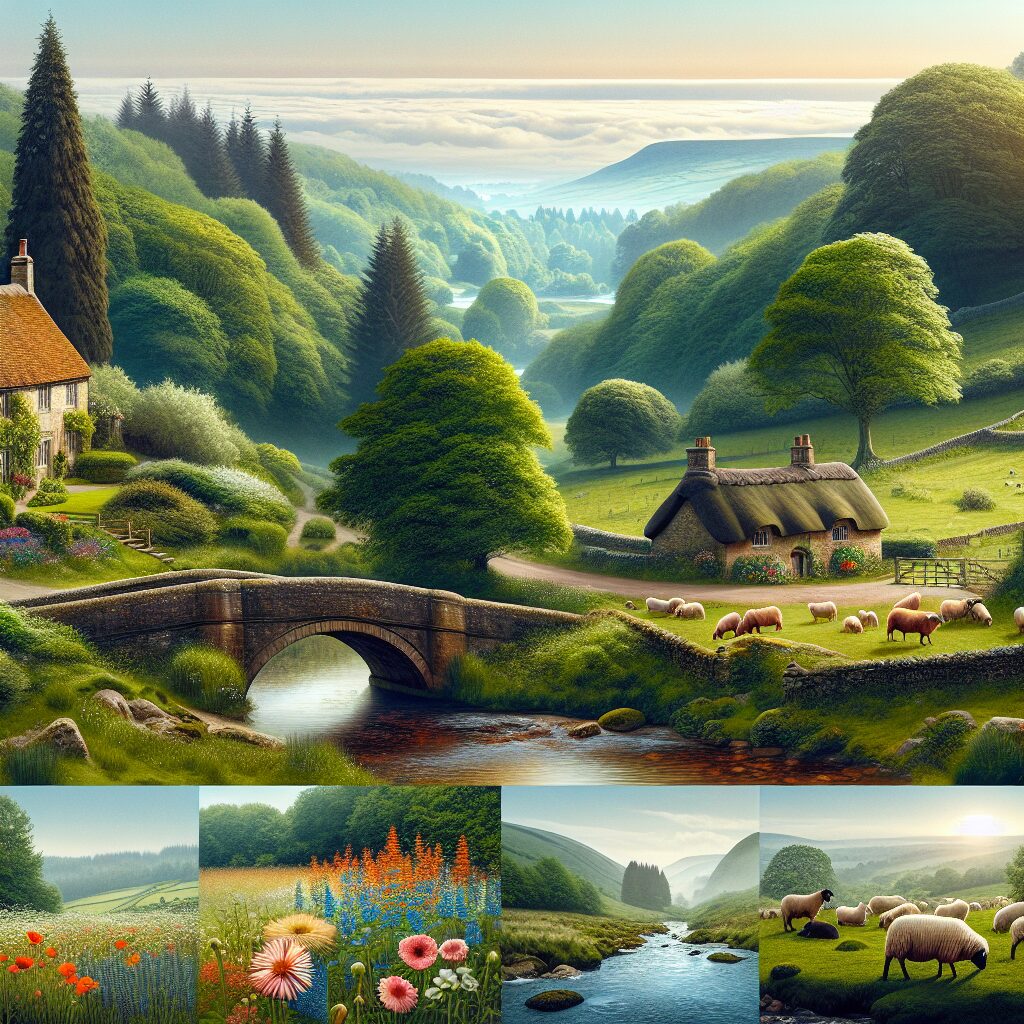Spanning the western reaches of Canada, the mighty Canadian Rockies wow with sheer majesty. Known for towering peaks, stunning lakes, and wildlife galore, this natural marvel lures adventure junkies and nature nuts from all over. With diverse landscapes, the Canadian Rockies serve up a smorgasbord of activities like hiking, skiing, animal watching, and wandering charming mountain towns tucked into valleys.
One unique trait? Ancient glaciers sculpting the scenery over countless years. These frozen giants carved deep valleys, steep cliffs and vivid turquoise lakes, creating spellbinding vistas that profoundly impact all who visit.
Now, let’s uncover key takeaways for exploring the Canadian Rockies. For starters, the area’s super accessible to visitors. With solid infrastructure and a web of national/provincial parks, adventure here is easy and convenient. Whether you dig a relaxed Icefields Parkway drive or heart-thumping hike to world-class viewpoints, there’s something for everyone.
And wildlife? This spot teems with animals. We’re talking grizzly bears, elk, rare alpine plants—a bonanza for nature lovers and photographers. The sheer abundance of creatures in their native habitat makes a Rockies visit truly unforgettable. Keep reading for more awesome surprises these natural treasures hold…
Top Takeaways
- The Canadian Rockies flaunt awesome natural beauty—we’re talking towering mountains, crystal-clear lakes, and postcard-perfect towns. Visitors soak up the stunning scene through recreation like hiking, skiing and wildlife viewing.
- Famous destinations Banff National Park and Jasper National Park boast insane scenery and outdoor options. We’re talking iconic spots like Lake Louise and Columbia Icefield to trails and animal encounters galore. Beauty and adventure? These parks deliver.
- The Icefields Parkway is a Canadian Rockies must-do. This scenic highway through the mountain heart offers nonstop jaw-droppers. With countless lookouts and wildlife potential, it guarantees a trip you’ll never forget.
- The town of Banff is the perfect HQ for exploring the region. It blends killer scenery with a fab stay, thanks to varied lodging, dining, and culture. Wander charming streets and galleries, feast on global cuisine, and soak in soothing natural hot springs.
- The Canadian Rockies shine year-round—each season flaunts unique magic. From spring’s blooms and roaming animals to winter’s snowy sports action, there’s never a bad time to visit. The only issue? Pulling yourself away from such grandeur once you arrive!
What Are the Hottest Spots to Explore?
Dive Into the Splendor of Banff National Park
Banff National Park’s reputation as a natural wonderland is well deserved. Located smack dab in the heart of the Rockies, it dazzles with thought-provoking scenery—we’re talking majestic mountains, breathtaking glaciers, and aquamarine lakes beckoning outdoor play. Hiking, camping, wildlife viewing, skiing—this park serves it all amidst quintessential Canadian wilderness.
Revel in Jasper National Park’s Untouched Allure
Jasper National Park also bedazzles Rockies explorers with stunning landscapes. Renowned for abundant fauna and pristine wildness, the park tempts endless roaming and adventure. Marvel at picture-perfect Athabasca Falls, tackle the celebrated Skyline Trail, or unwind in Miette Hot Springs’ soothing waters—the options here seem limitless!
Cruise Scenic Perfection Along Icefields Parkway
The Icefields Parkway is a top sightseeing bet, seamlessly linking Banff and Jasper National Parks. Take the wheel on this iconic road trip and the true majesty of the Canadian Rockies comes alive. Glaciers, falls, regal peaks flank this route—countless stops for legendary pics guaranteed. Make time for must-sees like the Columbia Icefield and Peyto Lake lookout for nature-induced awe.
Behold the Splendor of Lake Louise
Lake Louise’s fame is anything but exaggeration—this sparkling blue alpine lake looks ripped from fantasy. Backdropped by towering sentinels and tempting outdoor adventures like hiking, canoeing and horseback riding nearby, its allure is clear. Don’t miss a leisurely lakeside stroll or breath-snatching views on teahouse hikes!
Behold Dazzling Moraine Lake
Another shimmering Rockies stunner, Moraine Lake awes with its unreal, bright blue-green waters and the awe-inspiring Valley of the Ten Peaks. A paddle across this beauty or hike up to Rockpile Trail for brilliant photos is a must.
Revel in Wild Sightings Aplenty
An authentic Canadian Rockies trip means wildlife run-ins galore! Keep an eagle eye out for magnificent creatures like grizzly and black bears, moose, elk, mountain goats and beyond. Safely admiring them up close in their home turf is an unparalleled thrill.
Thrill to Outdoor Adrenaline Rushes
From hiking and biking to climbing and white water rafting, the rugged Canadian Rockies tempt endless outdoor exploits. With endless wilderness as your playground, push your limits or keep it chill—either way, adventure awaits out there!
Absorb Quaint Mountain Town Charm
Beyond spectacular nature, lovely burgs like Banff, Canmore and Jasper blend epic scenery, outdoor action and rich culture. Wander local galleries and shops, feast on delicious fare, and absorb the welcoming mountain town vibe that makes the Canadian Rockies so special.
Tips for an Epic Canadian Rockies Trip
- Visit in spring/fall for fewer crowds and dazzling fall colors
- Pack proper outdoor gear – we’re talking hiking boots, layers, rain jackets
- Follow park rules to respect the land and fragile ecosystems
- Stay hydrated and carry water while adventuring
- Bring bear spray and know bear safety protocols
- Book lodging ASAP, especially during high season
- Mix uber-popular and hidden hiking trails for full immersion
- Monitor weather changes in the mountains and prep accordingly
- Respect Indigenous heritage and land significance
Frequently Asked Questions.
1. When do you visit the Canadian Rockies?
Summer months in the Canadian Rockies tend to be June to September – weather conditions are excellent and there are lots of outdoor activities. However in case you love winter sports such as skiing or perhaps snowboarding you can check out the Rockies from December to March as well.
2. Are there entry fees to visit the Canadian Rockies?
Visits to the Canadian Rockies are cost-free of entrance fees. But a few National parks in the Rockies – like Banff national park – require a pass to enter – either online or at Park gates – or perhaps both.
3. Can I go by myself in the Canadian Rockies or should I book a guided tour?
In case you would rather explore on your own, you can tour the Canadian Rockies yourself. Trails and attractions in the Rockies are marked. But in case you want to get the best from your visit and need some insider knowledge about the area, a guided tour could be a good way to do that and more.
4. Attractions in the Canadian Rockies: What exactly are some must see attractions?
Attractions in the Canadian Rockies are Lake Louise and Moraine Lake, Athabasca Falls, Jasper National Park and also the Columbia Icefield. Each of these attractions has great views in addition to outdoor experiences.
5. Are there wildlife encounters in the Canadian Rockies?
Yes, you can see wildlife in the Canadian Rockies including mountain goats, moose, elah, and bears. Keep wildlife secure – maintain a safe distance – and never feed or even approach a wild animal.
6. What outdoor activities are popular in the Canadian Rockies?
Outdoor activities in the Canadian Rockies consist of hiking, fishing, camping, horseback riding or whitewater rafting or mountain biking or wildlife watching. There’s something for everybody – irrespective of ability or age.
7. So how do I get to the Canadian Rockies.
Fly into Calgary International Airport/Edmonton International Airport, which happen to have connections to major cities globally, to reach the Canadian Rockies. From there, rent a car or take a shuttle to the Rockies.
8. Do you have accommodations in the Canadian Rockies?
Yes, there are accommodation choices in the Canadian Rockies. Based on your budget and preference, you can stay at luxurious resorts, lodges, hotels, campgrounds and cabins. You should book your accommodation in advance during peak tourist seasons.
9. Could I see the Northern Lights over the Canadian Rockies?
Yes, you can see Northern Lights in the Canadian Rockies on clear evenings and some times of the entire year. Visit dark sky reserves or remote locations away from light pollution to get best viewing conditions.
10. What local cultural experiences do you have in the Canadian Rockies?
Definitely! You can experience indigenous cultural events in the Canadian Rockies, visit museums and art galleries displaying indigenous art and sample traditional Canadian cuisine.
Final Thoughts.
Exploring Canada’s Rockies offers natural splendor and adventure aplenty. Regardless of whether you are a nature enthusiast, a thrill seeker or simply want some peace and quiet amid breathtaking landscapes – the Canadian Rockies have something for everybody. From the turquoise lakes and the high mountains to the towns and wildlife – this is a place to remember.
And so pack your belongings, put on your hiking boots and get prepared for a journey through the Canadian Rocky Mountains. Whether you go by yourself or even have a guided tour, you will want to experience this magical place that will continue to charm explorers from around the globe.





